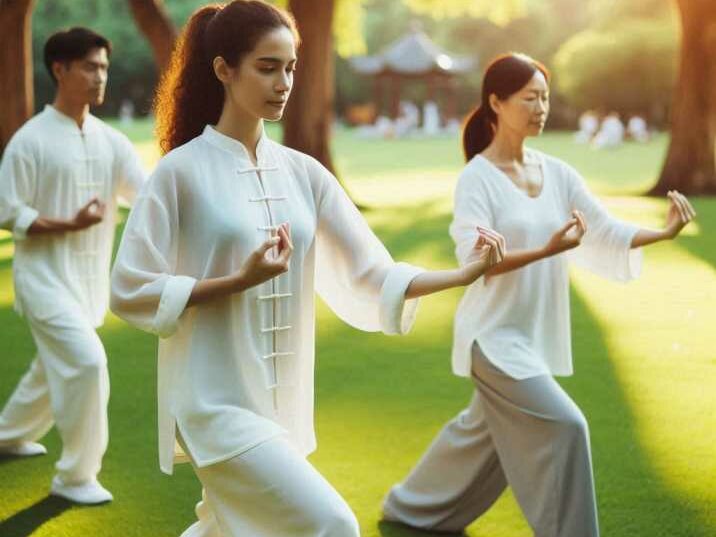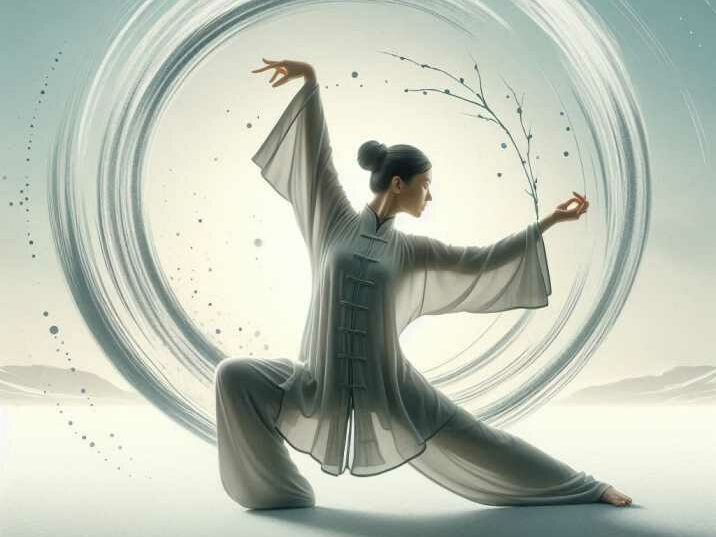emphasisingemphasises that martial arts offer a unique approach to physical activity by emphasizing mindfulness, balance, and controlled movements. Unlike fast-paced martial arts that focus on speed and power, slow martial arts concentrate on precision, relaxation, and inner calm. One of the most well-known slow martial arts is Tai Chi, an ancient Chinese practice that has gained popularity worldwide. In this article, we will explore the essence of slow martial arts, focusing on Tai Chi, and uncover its numerous benefits for people of all ages.

Introduction to Slow Martial Arts
Table of Contents
What Are Slow Martial Arts?
Slow martial arts are disciplines that prioritize deliberate, gentle movements over rapid and forceful techniques. These martial arts emphasize harmony between the mind and body, promoting a sense of calmness and relaxation. They are often practiced for their health benefits, including improved balance, flexibility, and mental focus.
Why Are Slow Martial Arts Popular?
Slow martial arts have gained popularity for several reasons. They are accessible to people of all ages and fitness levels, making them an excellent choice for those seeking a low-impact form of exercise. Additionally, slow martial arts are often practiced in peaceful, outdoor settings, providing a sense of tranquility and connection with nature.
Understanding Tai Chi
What is Tai Chi?
Tai Chi, also known as Tai Chi Chuan, is a traditional Chinese martial art that combines slow, flowing movements with deep breathing and meditation. It is sometimes called “moving meditation” because of its focus on mindfulness and relaxation. Tai Chi is practiced worldwide for its numerous health benefits, including stress reduction, improved balance, and enhanced overall well-being.
The Origins of Tai Chi
Tai Chi has its roots in ancient China, where it was developed as a martial art and a form of exercise. It is believed to have been created by a Taoist monk named Zhang Sanfeng during the 12th century. Over time, Tai Chi evolved into different styles, each with unique characteristics and forms.
Different Styles of Tai Chi
Tai Chi is a versatile martial art with several distinct styles, each offering a unique approach to movement, technique, and philosophy. Understanding these styles can help you choose the one that best suits your interests and needs.
1. Yang Style
Yang Style Tai Chi is the most popular and widely practiced Tai Chi style around the world. It was developed by Yang Luchan in the 19th century and is known for its slow, flowing, and graceful movements. The Yang Style emphasizes large, sweeping gestures and a relaxed posture, making it accessible and easy to learn for beginners.
- Characteristics:
- Slow and even pace.
- Emphasizes balance and relaxation.
- Focus on maintaining a soft and continuous flow of movement.
- Benefits:
- Improves balance and coordination.
- Reduces stress and promotes relaxation.
- Enhances flexibility and joint mobility.
2. Wu Style
Wu Style Tai Chi was founded by Wu Quanyou and further developed by his son, Wu Jianquan, in the early 20th century. It is characterized by small, compact, and gentle movements. Wu Style focuses on subtlety and precision, making it ideal for those interested in improving their balance and coordination.
- Characteristics:
- Smaller, more controlled movements.
- Emphasis on balance and relaxation.
- Upright posture with a slight forward lean.
- Benefits:
- Enhances focus and concentration.
- Builds internal strength and stability.
- Ideal for people with limited mobility or those seeking a gentler form of exercise.
3. Chen Style
Chen Style Tai Chi is the oldest form of Tai Chi, originating from the Chen Village in Henan Province, China. It combines slow, controlled movements with sudden bursts of speed and power, creating a dynamic and energetic practice. This style is often considered more physically demanding due to its mix of fast and slow techniques.
- Characteristics:
- Alternates between slow and fast movements.
- Incorporates explosive techniques and powerful strikes.
- Emphasizes spiral energy (silk reeling) and grounded stances.
- Benefits:
- Builds strength and endurance.
- Enhances coordination and agility.
- Offers a more dynamic and challenging workout.
4. Sun Style
Sun Style Tai Chi was developed by Sun Lutang in the early 20th century. It is a relatively modern style that incorporates elements from other martial arts, such as Xingyiquan and Baguazhang. Sun Style emphasizes smooth and agile movements with an upright posture and lively footwork.
- Characteristics:
- Combines elements of Tai Chi, Xingyiquan, and Baguazhang.
- Smooth, flowing, and continuous movements.
- Emphasizes quick transitions and nimble footwork.
- Benefits:
- Improves agility and coordination.
- Enhances cardiovascular fitness.
- Encourages mental clarity and focus.
The Benefits of Practicing Tai Chi
Physical Benefits
- Improved Balance and Coordination: The slow, controlled movements of Tai Chi help enhance balance and coordination, reducing the risk of falls, especially in older adults.
- Increased Flexibility: Regular practice of Tai Chi can improve flexibility and range of motion in the joints, promoting overall physical health.
- Strengthened Muscles: Tai Chi involves gentle resistance exercises that can help strengthen muscles, particularly in the legs and core.
Mental and Emotional Benefits
- Stress Reduction: Tai Chi’s focus on deep breathing and meditation helps reduce stress and anxiety, promoting a sense of calm and relaxation.
- Enhanced Concentration: Practicing Tai Chi requires concentration and focus, improving cognitive function and mental clarity.
- Emotional Well-being: The meditative nature of Tai Chi fosters a positive state of mind, contributing to emotional well-being and resilience.
Social Benefits
- Community Engagement: Tai Chi is often practiced in groups, providing an opportunity for social interaction and community building.
- Cultural Appreciation: Learning Tai Chi allows individuals to connect with Chinese culture and history, fostering cultural appreciation and understanding.
How to Get Started with Tai Chi
Finding a Tai Chi Class
To begin practicing Tai Chi, consider joining a local class or community group. Look for classes led by experienced instructors who can guide you through the movements and principles of Tai Chi. Many community centers, gyms, and wellness centers offer Tai Chi classes for beginners.
Practicing Tai Chi at Home
If attending a class is not possible, you can practice Tai Chi at home using online resources and instructional videos. Start with simple movements and gradually progress to more complex forms as you become comfortable with the practice.
Tips for Beginners
- Wear Comfortable Clothing: Choose loose-fitting clothing that allows for unrestricted movement.
- Practice Regularly: Consistency is key to reaping the benefits of Tai Chi. Aim to practice a few times a week to build a routine.
- Focus on Breathing: Pay attention to your breathing as you move through each form, inhaling and exhaling slowly and deeply.
- Be Patient: Tai Chi is a gradual process, so be patient with yourself as you learn the movements and develop your skills.
Table of Information about Slow Martial Arts
| Aspect | Description |
|---|---|
| Origin | Ancient China |
| Styles | Yang, Wu, Chen, Sun |
| Physical Benefits | Improved balance, increased flexibility, strengthened muscles |
| Mental Benefits | Stress reduction, enhanced concentration, emotional well-being |
| Social Benefits | Community engagement, cultural appreciation |
Conclusion
Slow martial arts, such as Tai Chi, offer a gentle yet effective way to improve physical health, mental well-being, and overall quality of life. With its focus on mindfulness, balance, and relaxation, Tai Chi provides a holistic approach to fitness that can be enjoyed by individuals of all ages and abilities. Whether practiced in a group setting or at home, Tai Chi offers a unique opportunity to cultivate inner peace and harmony while promoting physical vitality.

FAQs
1. What are the benefits of practicing Tai Chi?
Tai Chi offers numerous benefits, including improved balance, increased flexibility, stress reduction, enhanced concentration, and emotional well-being.
2. Can anyone practice Tai Chi?
Yes, Tai Chi is suitable for people of all ages and fitness levels, making it an accessible form of exercise for everyone.
3. How often should I practice Tai Chi?
For optimal benefits, aim to practice Tai Chi at least two to three times a week. Consistency is key to improving your skills and reaping the health benefits.
4. Do I need special equipment to practice Tai Chi?
No special equipment is required to practice Tai Chi. Wear comfortable clothing and practice in a quiet, open space.
5. Can Tai Chi help with stress relief?
Yes, Tai Chi is known for its stress-relieving benefits. The focus on deep breathing and mindfulness helps reduce anxiety and promote relaxation.


